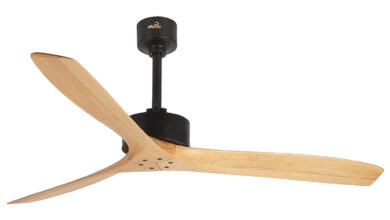How to Select the Right Size Toy for Your Dog or Cat
Selecting the right size toy for your furry friend is crucial for their safety, enjoyment, and overall well-being. Whether you have a playful pup or a curious kitty, understanding how to choose the appropriate toy size can make a significant difference in their playtime experience. In this comprehensive guide, we’ll explore the factors to consider when selecting toys for dogs and cats, the importance of size suitability, and tips for ensuring your pet’s happiness and safety during playtime.
Factors to Consider When Choosing Toys
Size and Breed Considerations
When it comes to choosing toys for your pets, one size does not fit all. Consider the size and breed of your dog or cat before purchasing any toy. Larger breeds may require more durable toys that can withstand their powerful jaws, while smaller breeds may prefer toys that are easy to carry and manipulate.
For dogs, consider their size and jaw strength. Large breeds like German Shepherds or Rottweilers may benefit from toys designed for heavy chewers, such as thick rubber toys or sturdy ropes. Smaller breeds like Chihuahuas or Pomeranians may enjoy smaller toys that they can carry around or cuddle with.
Similarly, cats have different preferences based on their breed and size. Larger cats like Maine Coons may enjoy toys that they can pounce on and wrestle with, while smaller cats like Siamese may prefer toys that they can bat around and chase.
Safety Concerns
Safety should always be a top priority when selecting toys for your pets. Avoid toys that are too small and could pose a choking hazard, especially for dogs and cats who are prone to chewing and swallowing small objects. Additionally, choose toys made from non-toxic materials that won’t harm your pet if ingested.
Inspect toys regularly for signs of wear and tear, such as loose parts or damage. Replace any damaged toys immediately to prevent accidents or injuries during playtime.
Importance of Size Suitability
Preventing Choking Hazards
Choosing the right size toy can help prevent choking hazards for your pets. Toys that are too small or have small parts can easily be swallowed, leading to choking or intestinal blockages. Opt for toys that are large enough to prevent accidental ingestion and always supervise your pet during playtime to ensure their safety.
For dogs, choose toys that are appropriately sized for their mouth and avoid toys that can easily be torn apart into small pieces. For cats, select toys that are lightweight and easy to manipulate, reducing the risk of accidental ingestion.
Encouraging Engagement and Physical Activity
The size of a toy can significantly impact your pet’s engagement and physical activity levels. Toys that are too large or heavy may be difficult for your pet to play with, leading to frustration or disinterest. On the other hand, toys that are too small or lightweight may not provide enough stimulation or exercise.
Choose toys that are the right size for your pet’s breed and size to encourage active play and physical exercise. Toys that are interactive or can be filled with treats can also help stimulate your pet’s mind and keep them engaged during playtime.
Tips for Selecting the Right Size Toy
Consult with Your Veterinarian
If you’re unsure about which size toy is best for your pet, consult with your veterinarian for personalized recommendations. Your vet can provide valuable insight into your pet’s specific needs and preferences, helping you choose toys that are safe, engaging, and appropriate for their size and breed.
Consider Your Pet’s Age and Activity Level
Age and activity level are important factors to consider when selecting toys for your pets. Puppies and kittens may benefit from softer toys that are gentle on their developing teeth and gums, while adult dogs and cats may enjoy toys that are more durable and challenging.
Consider your pet’s energy level and preferences when choosing toys. High-energy breeds may require toys that provide mental and physical stimulation, such as puzzle toys or agility equipment. On the other hand, senior pets may prefer softer toys that are easy to chew and cuddle with.
Rotate Toys Regularly
To keep your pet engaged and prevent boredom, rotate their toys regularly to provide variety and novelty. Introduce new toys periodically to stimulate your pet’s curiosity and prevent them from becoming bored with their existing toys.
Supervise Playtime
Always supervise your pet during playtime, especially when introducing new toys or toys with small parts. This will allow you to intervene quickly if any safety concerns arise and ensure that your pet remains safe and happy during playtime.
Conclusion
Choosing the appropriate toy size for your dog or cat is crucial to ensure their safety, happiness, and overall health. Taking into account factors like their size, breed, safety considerations, and age will help you select toys that cater to your pet’s individual requirements and desires. It’s important to keep a watchful eye on your pet during playtime, routinely examine toys for any signs of damage, and seek advice from your veterinarian for tailored recommendations. By providing your pet with the right toys, they can delight in endless hours of amusement and mental stimulation, contributing to their long-term well-being and contentment. Remember, whether it’s dog toys, cat toys, or considerations for pet day care, the right choices can make all the difference in your furry friend’s life.
You might like to read: How To Understanding Find Buyer For Export



